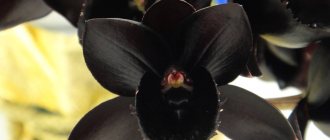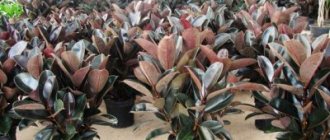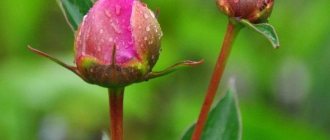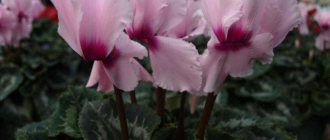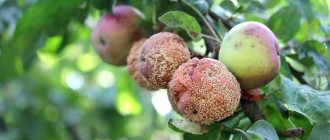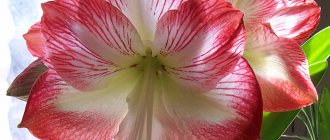Basic mistakes in plant care
Hibiscus, also known as Chinese rose, is not a very capricious plant, and it is quite unpretentious in care. It forgives small mistakes, but systematic violations of temperature and water conditions and other parameters it needs, naturally, will not go in vain. The plant will begin to hurt, wither, and if nothing changes, it may even die.
The most common mistakes in caring for hibiscus include:
- Violation of the watering regime, which can lead to rotting of the roots of the flower.
- Watering the plant with contaminated or hard water that has not had time to settle properly.
- Lack of spraying necessary for the flower, especially in the hot season.
- Hot and dry indoor climate.
- Leaves exposed to direct sunlight.
- Bad light.
- Drafts in the room.
- Untimely transplant
- Incorrect feeding – lack of nutrients or “overfeeding”.
- Dust and dirt on the plant.
Long-term violation of the requirements for caring for Chinese roses will certainly cause the development of diseases of home hibiscus.
How to replant and what to feed
The Chinese rose is replanted during the pruning period. Young plants should be repotted into a new pot every year, and older plants as they grow. Any substrate with sufficient nutrients is suitable for replanting. Usually this is a mixture of garden and universal soil in a ratio of 1 to 3. A small amount of humus or turf can be added to this mixture. Don’t forget about drainage so that the water doesn’t stagnate and the roots don’t rot. You should not replant into a pot that is too large, in this case the Chinese rose will begin to grow quickly, but the buds will not set. For large plants, instead of replanting, the top layer of soil is replaced.
Hibiscus is replanted using the transshipment method. The fresh substrate already contains all the necessary substances, so fertilizing should not be done immediately after transplantation, but at least after 2 months. The best time for feeding is the autumn-winter period. For Chinese roses, any fertilizer for indoor plants with a low nitrogen concentration is suitable.
Diseases caused by improper care: sunburn
Yellow spots on the leaves may be the result of sunburn. When choosing a place for a plant, you need to remember this. Usually, the Chinese rose tolerates sunlight well, but if you place a flower accustomed to shade in the bright sun, hibiscus leaf disease cannot be avoided. Dry yellow spots appear on them. They can also occur in places that are pressed against the glass. To avoid this, experts recommend accustoming hibiscus to sunlight gradually. Affected leaves with dry areas will have to be removed.
It is also necessary to know that changes in the color of leaves and the appearance of spots on them may be associated with a lack of certain substances in the soil. For example, if there is a lack of an element such as zinc, the leaves may become speckled and shredded. If the edges turn brown, the plant does not have enough sulfur. Marbling of the leaves, in which there are white spots between the veins, indicates a lack of magnesium. If the hibiscus lacks potassium, the leaves may begin to die at the edges. In addition, the plant will not bloom well.
How to trim branches
By cutting off the branches, you can form the crown of the plant. Here you should decide what exactly you want to see - a lush bush or tree. The branches need to be pruned annually in early spring, before the flower begins to grow intensively. You can prune in the fall after flowering. If you delay pruning, you may not even wait for flowering in the new season.
IMPORTANT
Only branches without buds can be trimmed.
Pruning indoor hibiscus is carried out with ordinary sharp scissors - pruning shears are too rough a tool. All dry and woody branches are removed. To get the shape of a bush, each branch needs to be cut to 1/3 of its length. Forming a hibiscus crown is beneficial for the plant itself. Don't be afraid to overdo it with pruning - new branches grow very quickly, and the foliage becomes denser.
Leaf chlorosis
Leaf spotting, or chlorosis, can also be caused by a lack of nitrogen and magnesium, and their yellowing and falling off can also be caused by a lack of iron in the soil. This is the so-called non-infectious chlorosis. The problem is solved by applying fertilizers, which should be regular, from spring until about mid-August, once every two to three weeks, and then, until the dormant period, once a month.
The lack of iron can be compensated for by adding iron chelate (5 g per 5 liters of water) to the water for irrigation. It is recommended to spray the leaves with the same solution. In total, it is advisable to carry out at least four treatments (once every two weeks).
This hibiscus disease (photo can be seen below) can also be caused by pathogens - viruses, fungi, bacteria, which are often carried by pests.
In this case, the plant usually has a depressed appearance. It is quite difficult to cure chlorosis in this case, since it is difficult to determine the causative agent of the disease. Therefore, it is easier to prevent it: provide good care, regularly wipe the leaves from dust and dirt, spray the hibiscus, replant it in a timely manner, changing the soil to a new one.
Botanical description
Hibiscus Syrian Duc de Brabant is a perennial tree-like deciduous shrub with a lush crown. The plant belongs to the Malvaceae family. Fruits in brown capsules with five walls.
This variety has a slightly different name - Duke de Brabant. And a few more variations: garden hibiscus Duke de Brabant, double hibiscus Duke de Brabant, tree hibiscus Duke de Brabant. The Latin name of the plant is “Hibiscus syriacus Duc de Brabant”.
The bush can grow to a decent size: in height from 1.5 to 2 meters and in diameter up to 2 meters. The shoots of the Syrian guest are light brown and grow vertically. The foliage is dark green, shaped like chrysanthemum leaves. The shrub is deciduous with a pronounced period of deep dormancy. Hibiscus stems are thick and covered with woody bark. The shoots are cone-shaped, heavily leafy. The bark is gray.
A sympodial type of branching is observed.
Single flowers bloom in summer with a warm hike and proper care. They can be simple or terry - depending on the variety. Also, the grade affects the color of the Syrian hibiscus flower. Duke de Brabant blooms with purple-red, densely double flowers with a dark center, the diameter of which reaches 14 centimeters. Flowering usually lasts from July to September. This variety, like all hibiscus, does not have flowers that last long. But the plant has many flower stalks, and therefore flowering is continuous.
There is not only a beautiful plant, but also the film of the same name “Syrian Hibiscus Blooms”, drama: Blooming Love. It’s not for nothing that films and books are named after this plant; it really deserves attention. And with proper care, it will delight the eyes of everyone around with frequent flowering.
The Duc de Brabant variety was developed in the Netherlands. Syrian hibiscus is very widespread in the modern world: it adorns landscapes in China, Korea, and Western Asian countries.
Spider mite infestation
This is one of the main pests of hibiscus. When it infects the leaves, it envelops them from below with a web. The leaves curl and wither. This pest thrives in dry, warm conditions, so in order to prevent infection, it is necessary to keep the hibiscus leaves clean and spray them regularly.
Chemicals such as Actellik, Fitoverm, Neoron will help fight the pest. However, the peculiarity of this pest is that it quickly gets used to such drugs. Oddly enough, folk remedies may be more effective. Most often, soapy water, infusion of garlic, and onion peels are used. To prepare the infusion, two heads of garlic are crushed and filled with water (1 liter). Leave in a dark place for five days. Before use, the product is diluted in half with water and used to spray the plant.
For onion infusion, 100 grams of onion peel must be poured with five liters of water and infused for four to five days. Strain the infusion and use to spray hibiscus.
It is advisable to periodically wipe the window sill on which the plant stands with a soap solution as a preventative measure.
How to propagate Chinese rose
Propagating hibiscus by cuttings is the easiest way. For this, you can even use those shoots that have been cut . The main thing is that the sprout is strong enough and woody.
The cutting is placed in a container with water until roots appear. To stimulate root growth, you can add activated carbon or a special preparation to the water that accelerates rooting. As soon as the roots appear, the sprout is transplanted into a small pot with ordinary soil.
For a young plant, you will need a greenhouse, which can be easily built by cutting off a plastic bottle. To allow fresh air to flow into the flower, you need to make several ventilation holes. A young sprout requires frequent and regular watering, then it will grow quickly. As soon as at least one leaf appears on the cutting, the greenhouse is no longer needed.
Read more: Propagating hibiscus from cuttings
Whitefly infestation
This small flying insect should also be mentioned when describing ficus diseases and their treatment (a photo of the pest is presented below). It lives on the underside of hibiscus leaves. The leaves become covered with sticky spots and turn yellow.
To get rid of whiteflies, chemicals are usually used - Fufanon, Aktaru, Iskra. Adult insects can be washed off with a stream of water, and larvae, eggs and plaque can be removed with a swab of soapy water (100 g of crushed laundry soap, or better yet, tar soap per half liter of water).
Photo
See what the Duc de Brabant hibiscus looks like:
Sources
- https://sadlike.ru/gibiskus-dyuk-de-brabant.html
- https://5stihiynn.ru/gibiskus-djuk-de-brabant-posadka-i-uhod/
- https://novasad.ru/gibiskus-dyuk-de-brabant/
- https://www.ogoroddoma.ru/grunt/gibiskus-posadka-i-uhod-v-otkrytom-grunte-v-podmoskove.html
- https://gk-agro.ru/gibiskus/gibiskus-dyuk-de-brabant.html
- https://bekker.kz/ru/articles/gotovim-gibiskusy-k-zime-sekrety-opytnyh-sadovodov
- https://peschanoepans.ru/gibiskus-brabant-opisanie/
- https://dacha.expert/domashnie-rasteniya/tsvetushhie/gibiskus/vidy-gi/sadovyj/sirijskij/dyuk-de-brabant.html
- https://www.martin-sad.ru/%D0%B8%D0%BD%D1%82%D0%B5%D1%80%D0%BD%D0%B5%D1%82-%D0%BC% D0%B0%D0%B3%D0%B0%D0%B7%D0%B8%D0%BD-%D1%80%D0%B0%D1%81%D1%82%D0%B5%D0%BD%D0 %B8%D0%B9/p/224471-gibiskus_siriyskiy_dyuk_de_brabant/
- https://pionsad.ru/landshaftnyj-dizajn/gibiskus-dyuk-de-brabant-foto-opisanie-rasteniya-instruktsiya-po-posadke-i-uhodu-sravnenie-s-sirijskim-hibiscus-specious-i-drugimi- pohozhimi-tsvetami.html
- https://zolotoj-pion.ru/dikie/gibiskus-dyuk-de-brabant-opisanie.html
- https://floriums.ru/gibiskus-sirijskij-posadka-i-uhod-v-otkrytom-grunte
- https://distano.ru/garden-plants/gibiskus-sirijskij-posadka-i-uhod-v-otkrytom-grunte.html
Why doesn't hibiscus bloom?
The lack of flowering in hibiscus can be called a disease at a stretch, but it can ruin a gardener’s mood for a long time. What could cause it?
The first reason is a lack of nutrients (in particular, potassium deficiency). The plant simply does not have enough resources to flower. The second is lack of lighting. Bright light is necessary for setting buds. In order for hibiscus to bloom, the time spent in light must be at least four hours a day. The lack of flowers may be due to the fact that pruning was not carried out in a timely manner. It must be remembered that flowers form on young shoots. To plant them, it will also be useful to replace the soil in the pot and carefully move the hibiscus to a more illuminated place.
In addition, the flower needs a rest period from October to February. It is believed that in order for the Chinese rose to bloom, it is necessary to reduce the room temperature to 15-18 degrees Celsius. Flower buds are formed precisely under these conditions. Although cases of winter flowering of hibiscus are not uncommon. If the sun's rays penetrate well into the room, this is quite possible.
In addition, the hibiscus may begin to prepare for flowering and suddenly drop its buds. Why is this happening? Experts note that during the flowering period, the Chinese rose should under no circumstances be moved from place to place. Hibiscus generally does not tolerate rearrangements very well, and even more so during flowering or preparation for it, when all the flower’s forces are spent on forming buds.
Describing hibiscus diseases and their treatment (photos of some of them are presented in the article), it should be noted that the fall of the flower ovary can also be a consequence of damage to the hibiscus by a pest - gall midge, a miniature midge. She attacks the buds, laying her eggs in them. Naturally, the hibiscus will no longer bloom, the plant will shed its buds. If it is clear that they have turned yellow, they must be carefully torn off and destroyed to prevent the spread of pests. The soil should be treated with Provotox, Grizzly or Fly Eater, strictly following the instructions.
So, to summarize, we can say that for a plant to bloom, it requires a period of rest in winter, pruning, optimal lighting and timely feeding. In addition, you should not often move the flower from place to place.
How to plant Angel Wings
Most often, the Chinese rose is propagated by cuttings, but it can also be sown. A very beautiful variety of hibiscus - Angel Wings; growing this plant from seeds is a long process. The first shoots appear only a month after planting, and the grown seedlings can already be divided into their own pots.
To grow Angel Wings from seeds, you have two options. The first is the simplest - just sow the Wings in the substrate (you can easily buy it in flower shops) to a depth of 0.5 cm, sprinkle with soil and slightly moisten it. The pot with seeds is covered with a glass lid. The seedlings need to be periodically ventilated and watered, for which the lid is removed for a while.
You can make the substrate yourself; as a result, you should end up with several layers in the pot:
- drainage;
- flower soil;
- sand;
- peat.
To increase the germination of seeds, they need to be soaked in a manganese solution for 14 days.
Landing
Before planting, carefully familiarize yourself with the technology of this procedure and make the necessary preparations. Take full responsibility when choosing a planting location - this affects the full development of the seedling, the speed of growth and the intensity of flowering. The area must be exposed to sunlight for at least 6 hours a day. You can plant hibiscus in open areas, but then you will have to water it much more often. Choose a site on a slight elevation and with sufficient drainage - hibiscus roots will inevitably begin to rot when groundwater stagnates.
The soil in the selected area is cleared of weeds and dug up deeply (at least two spade bayonets). This depth is necessary for the full development of the root system. Herbaceous hibiscus is not very picky about the type of soil and feels great on loam and turf, but the soil must be loose and moisture-permeable.
Herbaceous hibiscus seedlings (grown independently or purchased in a store) can be placed in open ground in the spring, when the likelihood of return frosts has already passed. If you plan to plant several plants, mark the selected area and allocate enough space for each seedling (1-1.5 m in diameter).
Prepare planting holes - dig them of the required size, sufficient for the development of roots, add drainage to the bottom (fine gravel, pebbles, brick chips). Mix the soil selected from the hole with peat, humus and sand, sprinkle it a little onto the drainage layer. Water the prepared seedlings generously, allow the water to soak well, and carefully remove the plants from their “temporary home.” Place the seedlings in the holes along with a ball of earth, watch the location of the root collar - it should be slightly below ground level.
Fill the hole with soil mixture, carefully compacting the soil and avoiding voids, and mulch the tree trunk area. The best material for mulch is fallen pine needles.
Varieties
Among modern varieties of herbaceous hibiscus, you can find plants with different decorative properties (flower size, color, bush height) for creating bright, unusual landscape design compositions. The most widespread varieties are “Youth”, “Late”, “Pink-porcelain”, “Copper King”, “Old Yella”, “Cranberry Crush”.
It would take a very long time to list the existing varieties of herbaceous hibiscus, and a description of their botanical characteristics and decorative properties would take hundreds of pages. But each of them is worthy of the attention of both ordinary gardeners and landscape designers.
